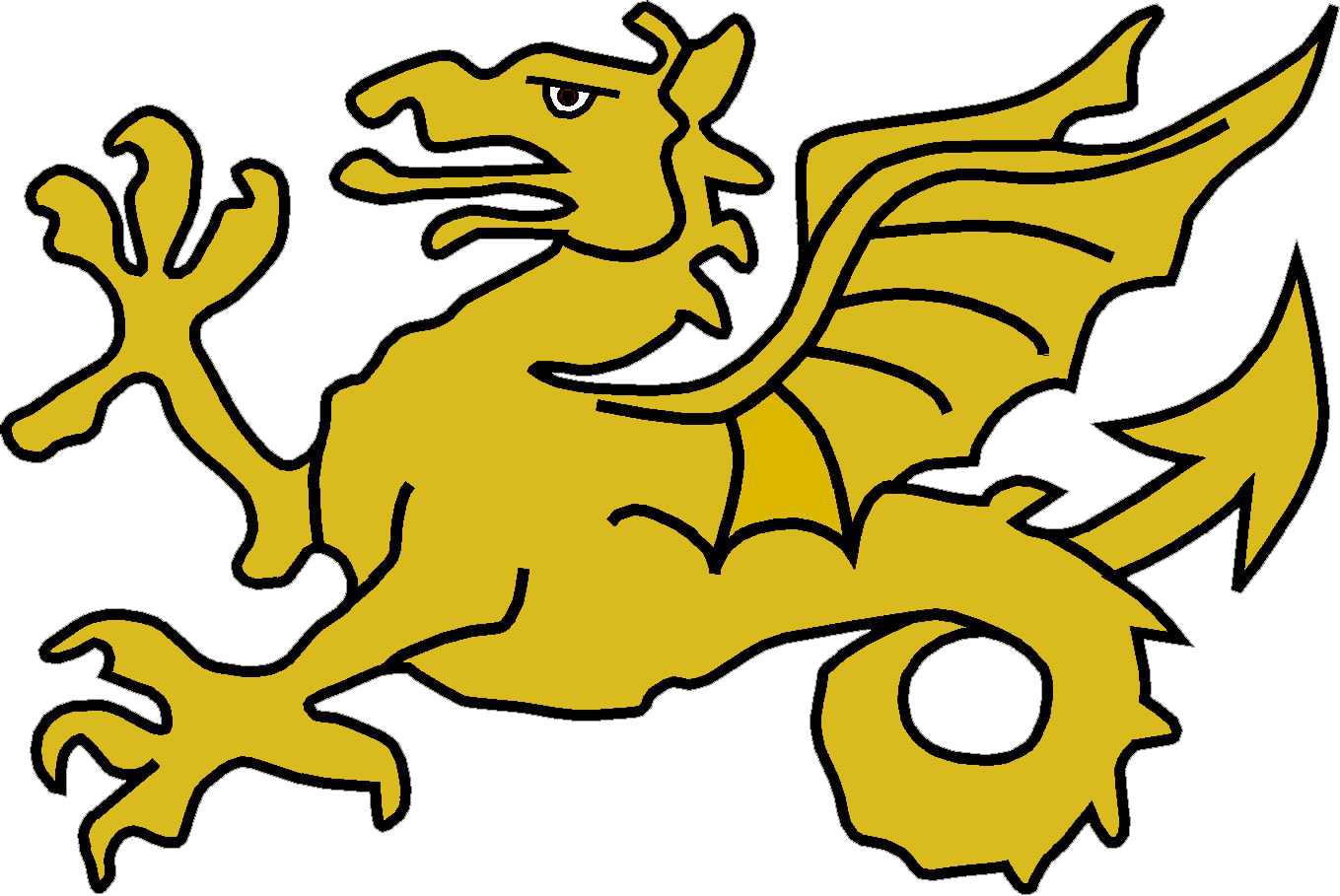 |
| The Golden Wyvern, associated |
| with the House of Wessex. |
Wyverns frequently serve as mascots for sports teams or in heraldry—adorning shields, banners, and crests—in which they symbolize strength and endurance. Wyverns also appear in literature. Dante's description of the monster Geryon in the eighth circle of hell resembles a wyvern. It has wings, a reptilian body, a barbed tail with a poisonous stinger, and hairy paws and legs. The major difference is the head, which is human. Dante's beast mixes human, bestial, and reptilian traits.
"Behold the monster with the pointed tail,
Who cleaves the hills, and breaketh walls and weapons,
Behold him who infecteth all the world."
Thus unto me my Guide began to say,
And beckoned him that he should come to shore,
Near to the confine of the trodden marble;
And that uncleanly image of deceit
Came up and thrust ashore its head and bust,
But on the border did not drag its tail.
The face was as the face of a just man,
Its semblance outwardly was so benign,
And of a serpent all the trunk beside.
Two paws it had, hairy unto the armpits;
The back, and breast, and both the sides it had
Depicted o'er with nooses and with shields.
With colours more, groundwork or broidery
Never in cloth did Tartars make nor Turks,
Nor were such tissues by Arachne laid.
As sometimes wherries lie upon the shore,
That part are in the water, part on land;
And as among the guzzling Germans there,
The beaver plants himself to wage his war;
So that vile monster lay upon the border,
Which is of stone, and shutteth in the sand.
His tail was wholly quivering in the void,
Contorting upwards the envenomed fork,
That in the guise of scorpion armed its point.
(from Dante's Inferno, Canto XVII)
 |
| Saint Michael and the |
| angels fighting the Wyvern, |
| from Liber Floridus (1448). |
Image Attribution: The Golden Wyvern, attributed to Sketchy Berd and licensed under the Creative Commons Attribution 3.0 Unported license.
No comments:
Post a Comment